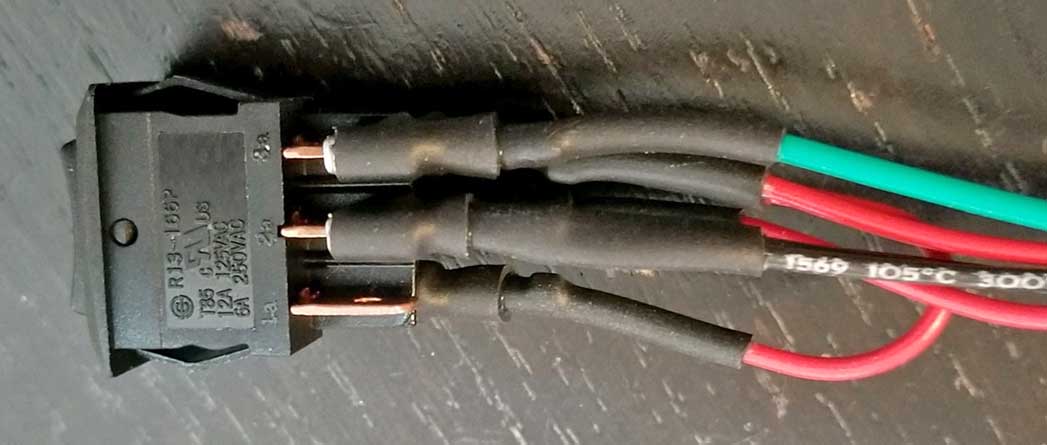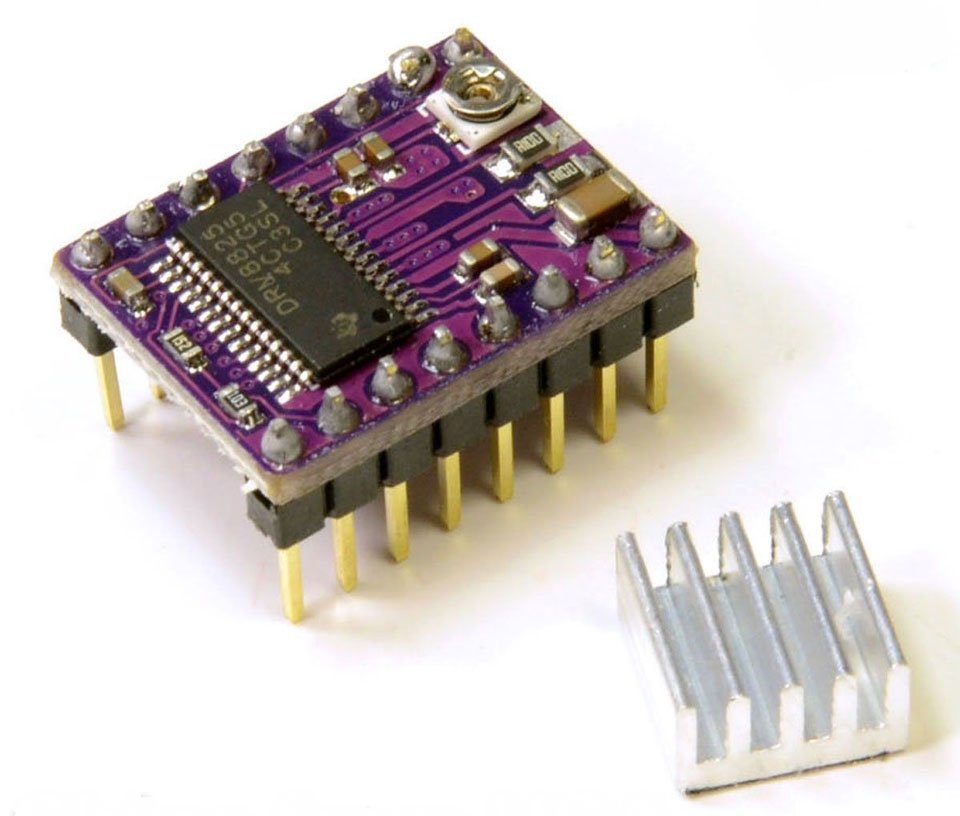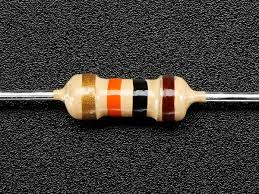| Stepper Idle Valve Control Project GM Style Idle Valve |
 |
UPDATED: September 14, 2024 CONTACT

|
D O
M A I N S   |
|||
 |
 |
 |
 |
 |
 |
 |
 |
 |
 |
 |

|

|
|
 |
 |
 |

|
|
 |
 |
 |

|
 |
 |
 |
 |
 |
 |
 |
 |
 |
 |
 |
 |

|

|
 |
 |

|
 |
 |
 |
 |
 |
CONTACT
| INTRODUCTION This page details work I did on a custom idle air control device for my Volvo 242 Turbo. I'm sharing it here for the benefit of others who might be interested in trying something similar.  My car originally had Bosch K-Jet mechanical fuel injection. I changed is to programmable fuel injection system from SDS (Simple Digital Systems) many years ago for improved performance and reliability. I began using SDS more than 20 years ago. Megasquirt is now a popular engine management system if you're a DIY type, but that didn't exist yet when I started using SDS. SDS works well, so I have stayed with SDS all these years. SDS has been bulletproof and flawless, except for idle functions. SDS was originally designed for racing and it does not have, nor can it control a modern PWM idle air control function, which more modern EFI systems can now do. What SDS originally offered was the ability to trigger a simple electric air valve to crudely increase idle speed for cold warm up or AC idle increase. A simple ON/OFF or OPEN/CLOSED idle valve like that can work OK, but it's a less precise substitute. Such a system may not work quite as well as you like when engine temperature changes or when environment changes occur. In the end, this project was very successful. It added convenient refinements to my idle functions with easy, quick changes from the dash. For those of you familiar with GM stepper IAC valves, this extra control function detailed below may be welcomed information. First watch Jon Lamb's video below before getting deep into my project. He shows how he used this type of setup to switch between normal and custom idle settings using a dash switch (something I'm not using). Your feedback or comments are welcome: CONTACT |
| In 2018 I discovered the below Youtube video made by Jon
Lamb (comeinhandynow) in the U.K.. It details his method of making a stepper motor idle speed circuit that can be
adjusted from the dash. Jon created this manual
adjustment method for a 4-wire idle air control valve, such as
one found in a GM car like he shows in this video. It sounded like a fun
project, so I began planning to try it myself. As far as I know, this can ONLY be done with a 4-WIRE idle valve. https://www.youtube.com/watch?v=NrUIs_Jw3RQ |
Before we begin, here's info about my basic Idle Air Control Method in my 242
This below image is
an Ehcotech 12 volt
electric air valve. I have used this type of valve for idle increase for over 15 years with great results.
A valve like this could be used with a manual fast
idle switch on my dash for cold starts.
A second valve can be used and triggered by the AC compressor 'ON' circuit for AC idle
increase. Having TWO valves allows for two different manually set idle settings. These valves are found on-line for under $10. 
THROTTLE MICRO-SWITCHES Additionally, I use two micro-switches. These have been added a bracket on the throttle spool. The switches are closed (or ON) when the throttle it at idle and they shut OFF above idle. The purpose is to override and shut ALL valve circuits OFF whenever throttle is increased above idle. This means all air valves are closed when the engine is ABOVE idle. The micro-switches are wired to interrupt the ground circuit on the relays which control the air valves.  |
||
| HOSE LINE PINCH CLAMP for tuning air hoses. A crude but simpIe adjustment method to tune airflow through a soft air hose. I'm using 1/2 inch I.D. silicone hose for the air lines from the intake tube (pre-throttle body) to the above valve and then to the intake manifold. Tuning the airflow in the hoses can be done simply with a hose line pinch clamp like this one. It squeezes the hose in very small, precise adjustments.  DUAL IDLE VALVE DIAGRAM This diagram shows the basic circuits I use for two different idle air valves. This diagram does NOT show the STEPPER VALVE CIRCUITS. Idle valve #1 is my primary idle circuit and it can be activated at any time with the dash switch. Plus this circuit will be automatically activated when my AC compressor is turned on using a relay to override idle valve #1. In my system, the valve in THIS circuit is the one which feeds air to the STEPPER valve. So any time this #1 circuit is active, it can be adjusted on demand using the momentary rocker dash switch in the STEPPER circuit below. Idle valve #2 is a secondary circuit, which can be activated if needed for a cold start increase, etc. It's a manual circuit only and does not use a stepper valve. Both of these can also have the air flow fine tuned by using the hose line pinch clamp.  |
||
|
||
So the system created by Jon Lamb allows a user to manually
adjust the idle speed on the fly from the dash. This becomes useful
if the system you're using for idle control isn't perfect. Maybe you want a higher idle during
warm-ups or when the AC is on (or combined with
warm-ups). For me, being able to do an easy quick adjustment
in my 242 Turbo was going to be a nice benefit.
|
||
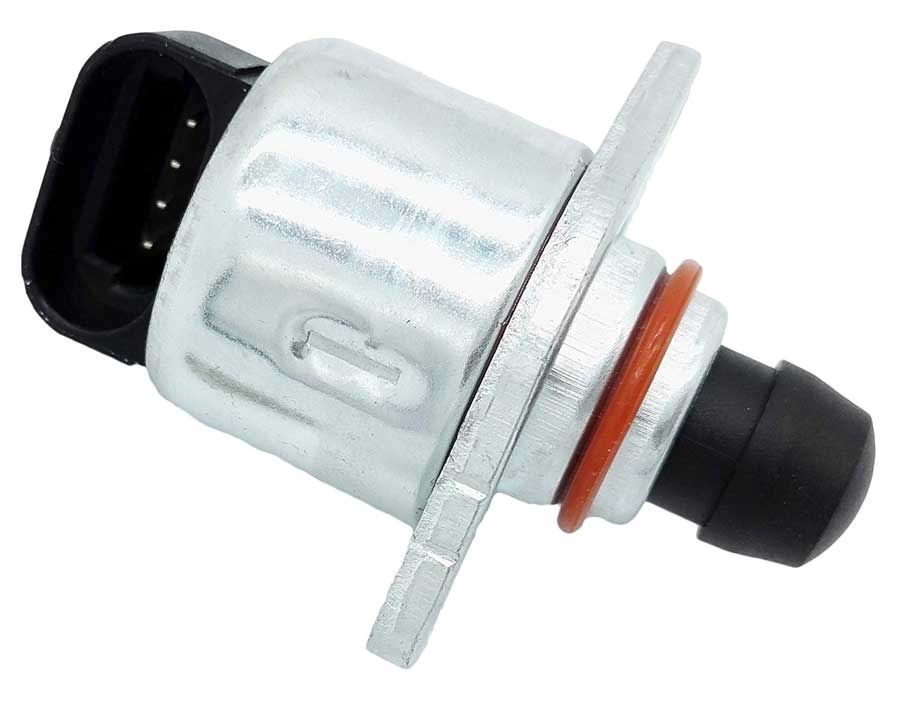  This is a GM stepper idle motor from approximately 2003 and later GM cars or trucks. This motor uses this 4-wire connector plug. |
||
 <<<
This is an EARLIER style GM idle motor that came in cars
up until approximately 2003. It could also work, but you
would need to mount it differently than I did, since it's made with
threads to screw into a manifold, instead of the above
motor, which simply bolts on. And this earlier type uses a
different style 4-pole plug, so I won't be discussing how to use this older motor.
<<<
This is an EARLIER style GM idle motor that came in cars
up until approximately 2003. It could also work, but you
would need to mount it differently than I did, since it's made with
threads to screw into a manifold, instead of the above
motor, which simply bolts on. And this earlier type uses a
different style 4-pole plug, so I won't be discussing how to use this older motor. |
||
| As
you'll soon see if you look really close, I've eliminated a few components
from the design shown in Jon Lamb's video. My
intent was to create a strictly stand-alone setup that
could manually adjust the idle up or down from the
dash. I'm
not re-inventing anything. I'm simply modifying Jon Lamb's idea. My system will not switch between two different idle systems like Jon Lamb's did. Stepper circuits like this are a pretty new thing for me. So please don't mistake me for some kind of electronics wizard. I'm not, but I'm gradually learning. |
||
| A Housing for the Idle Valve You may have noticed this GM idle motor above is not really a complete valve. It's just a stepper motor with a plunger. I searched and could not find an all-in-one 4-wire idle valve with integrated IN and OUT hose barbs. Maybe one exists, but I found nothing that would work for me. So I started searching for an adapter housing that I could make, buy or modify to make that stepper motor into a full stand-alone idle air valve. There are a few custom housings I found like this BELOW. Most are very expensive. I chose this adapter from Accufab Racing. It was more money than I wanted to pay, but it works. It's designed to use the same GM idle motor I chose. This adapter was originally designed for adapting a GM stepper idle motor for use on a Ford engine.
|
||
| Here's a view inside BELOW. This hole starts at about .875 inch diameter. That first step is about .250 inch deep and it reduces to about .750 inch diameter. The .750 inch hole depth is about 1.1 inch and the final size beyond that is 7/16 inch (.4375 inch). If you're handy and have the machine tools or drills, making one of these would not be very difficult either out of aluminum or maybe even a sturdy, high-temp plastic block.  |
||
|
Coincidentally, those IN and OUT holes on the bottom were
7/16 inch diameter, which
is the correct size for a 1/4 inch NPT thread tap.
 |
||
After taping the threads, I inserted 1/4 inch NPT
nylon hose barbs (for using 1/2 inch I.D. hose). These hose barbs have an I.D of .375 inch. Now I have a stand-alone idle valve (except for the circuits to run it of course). I was initially concerned that the .375 inch I.D. of those hose barbs might be too small for the airflow needed. If this became the case, then I could optionally drill the holes in the block to 37/64 inch for larger 3/8 NPT thread. That turned out not to be needed. |
||
My version uses a few less parts, since I don't already have an existing GM ECU that uses this type of motor for primary idle control. So I won't be using the RELAY or the TOGGLE SWITCH Jon used to switch from Automatic to Manual Idle Control. I initially had a little trouble interpreting and following Jon's hand-drawn diagram, so I slowly figured out how all these components went together and then created a new, easier to read diagram below showing each component. This diagram below is a little different from Jon's diagram. It doesn't include the relay and switch he used to switch between his factory EMS and the manual idle control. Creating this diagram helped me to better visualize the task, since some of these components were new to me. I hope it helps you understand better too. If you need any help with this diagram or with the diagram shown in Jon's video, feel free to contact me. |
||
 A printable PDF version of this diagram is available: CLICK HERE (1.2 mb PDF) An inventory of PARTS is at the bottom of this page. |
||
| Before actually building the these circuits, I hooked up the raw
circuits on a solderless breadboard (BELOW) to test it and make sure I had it
right. It worked as promised. If you check out the below video, you'll get to see my test in action. |
||
 If this is all new stuff to you, more basic information on working with BREADBOARDS like this can be found here: https://www.youtube.com/watch?v=8hyL9DXYFZc&feature=youtu.be |
||
https://www.youtube.com/watch?v=HuoEHuL5Dzw&feature=youtu.be |
||
| FYI: 12V DC POWER SUPPLY I'M USING If your work or hobby involves testing stuff like this, a 12 Volt DC Power Supply can be a big help. A similar power supply can usually be found USED fairly inexpensively on eBay. This one is an old-school analog type. Most that are available now will probably have a digital display.   |
||
Here's the mini rocker switch I'm using. I added this to my dash for the idle increase/decrease adjustment. It's mounted in a dash switch blank panel in my 240. Photo of that below.  |
||
| Here's a view of the left
side below. The mini rocker switch has .187 inch tabs on the back. I had some un-insulated female .187 inch terminals, so I covered them with heat shrink tubing. Pin-outs on this side view from top to bottom are: 12V OUTPUT (top), 12V INPUT (middle), and 12V OUTPUT (bottom). 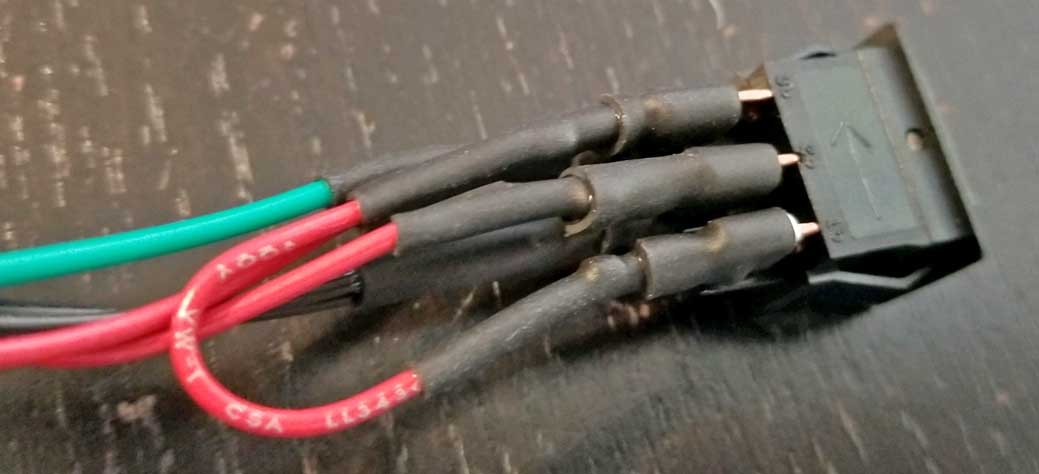
|
||
I
decided not to solder everything together like Jon did
in his video. This is a personal preference thing.
You might like soldering stuff. I don't
particularly care for it. Solder joints are prone
to cracking when used in a vibration environment, like a car. When that happens, you'll have a hard
time finding the problem. 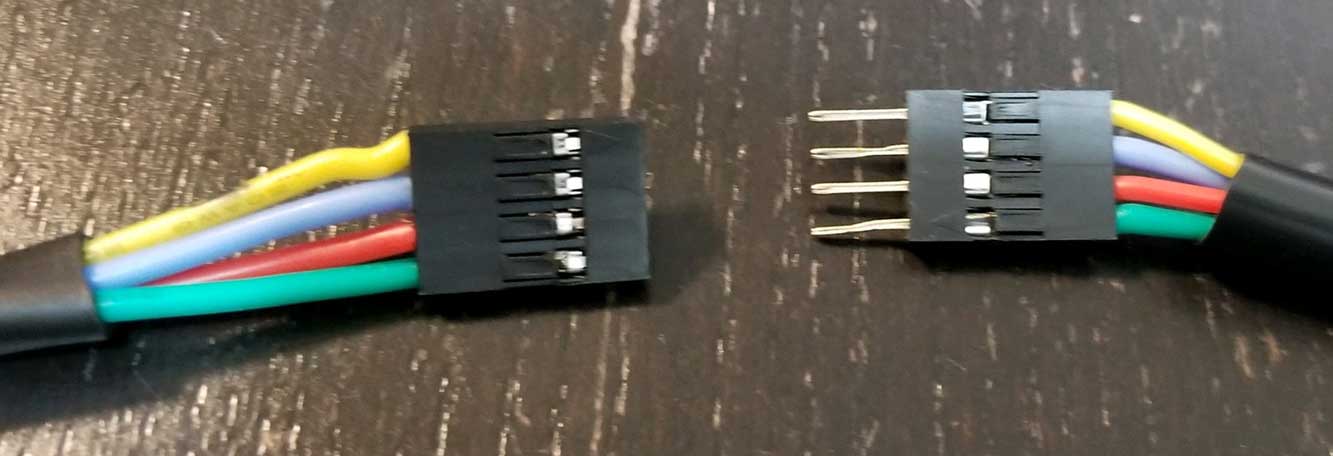 I bought a JST mini pin connector kit (see parts list below). It worked out nicely. This type of connector was used in the below project box to connect to the circuit board. The ABOVE connectors were used to connect the project box (which I put inside the dash) with four wires going through the firewall to the engine bay for the idle valve. The only problem with this type of connector is that it does not lock together, so taping it together might be a good idea. If I did this again, I would probably change to a Deutsch type connector CLICK HERE. |
||
| Here's the project box that I stuffed everything into. When testing again at a final stage, things suddenly stopped working. I discovered that the 5V regulator had stopped working. I probably accidentally shorted it when moving stuff around. I replaced the regulator and it all worked perfectly again. Good thing I bought two of them.  The next step was installing all this in the car. |
||
I
mounted the new idle valve assembly under the intake manifold
here. |
||
A
close up view. |
||
| Here's the idle adjustment rocker switch. This idle valve is set up to adjust the fast idle #1 circuit. Idle #2 is an extra circuit that can be used during warm-ups and it uses the second idle valve.  |
||
|
After trying this new idle
setup using the two small Ehcotech valves shown at the
top of this page, I found that the small Ehchotech air
valve
(with a 3/8 inch I.D.), which was used for idle circuit #2 as a second idle
valve, was
not allowing quite enough
airflow during high airflow demand (mainly for cold
idle). This was a unique problem that I think was mostly caused by my low
compression engine (B21FT) with a big cam. Every engine is different. I decided
that the small valve not
big enough, so I bought this valve pictured above. It's
a larger valve and also has a plastic body. The inner diameter is 3/4
inch. It solved the problem and now the
engine gets plenty of airflow in any cold idle
condition. I found this valve on eBay for about
$25.

|
||
| If you have
any comments or questions, please feel free to
email. CONTACT |
| PARTS LIST |


